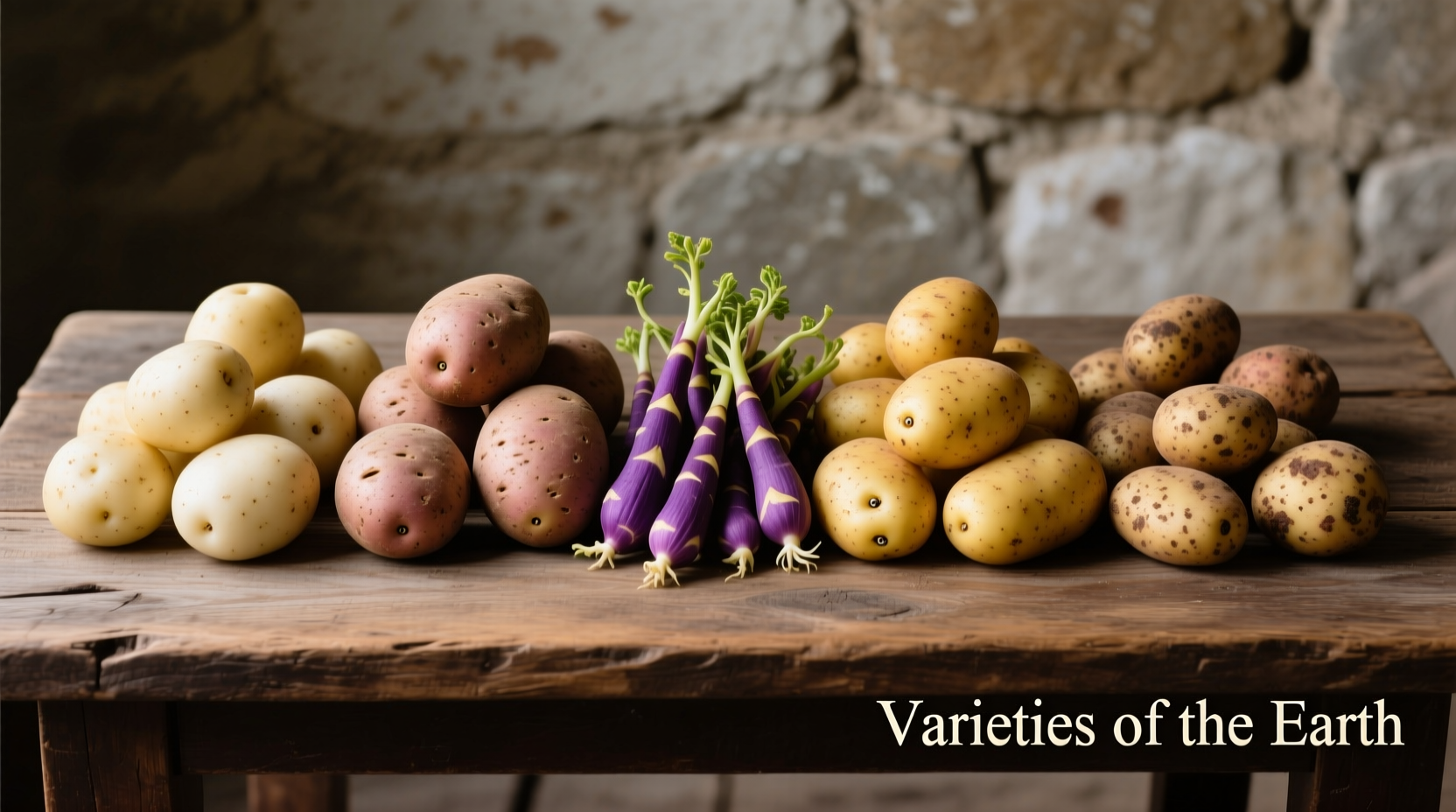Ever wondered why your mashed potatoes turn out gluey or your roasted potatoes won't crisp properly? The secret lies in understanding potato varieties. Selecting the right type can transform your cooking results from disappointing to delicious. With over 4,000 varieties worldwide, knowing which potatoes work best for specific cooking methods is essential knowledge for any home cook.
Understanding Potato Classifications
Potatoes fall into three main categories based on starch content, which directly impacts their cooking behavior. Choosing the right classification for your cooking method makes all the difference in texture and final results.
Starchy Potatoes: The Fluffy Specialists
High-starch potatoes like Russets have thick brown skin and fluffy, dry flesh when cooked. Their low moisture content makes them ideal for baking, mashing, and frying. When cooked, their cells separate easily, creating that light, airy texture perfect for classic mashed potatoes or crispy roasted wedges.
Waxy Potatoes: The Shape Keepers
Waxy potatoes maintain their shape during cooking thanks to their high moisture and low starch content. Varieties like Red Bliss and Fingerlings work beautifully in salads, soups, and casseroles where you want distinct potato pieces that don't disintegrate. Their smooth, firm texture holds up well to boiling and steaming.
All-Purpose Potatoes: The Versatile Middle Ground
Yukon Golds and similar varieties offer a balanced starch-to-moisture ratio, making them incredibly versatile. They can be boiled, roasted, mashed, or fried with excellent results. This adaptability explains why Yukon Gold has become a staple in kitchens worldwide.
Top Potato Varieties and Their Best Uses
Understanding specific potato varieties helps you achieve professional results at home. Here's what culinary professionals know about selecting the perfect spud:
| Variety | Starch Level | Best Cooking Methods | Flavor Profile |
|---|---|---|---|
| Russet Burbank | High | Baking, mashing, frying | Earthy, robust |
| Yukon Gold | Medium | Mashing, roasting, boiling | Buttery, rich |
| Red Bliss | Low | Boiling, salads, steaming | Mild, slightly sweet |
| Fingerling | Medium-Low | Roasting, grilling, salads | Nutty, earthy |
| purple Peruvian | Medium | Roasting, mashing, salads | Earthy, slightly peppery |
The Science Behind Perfect Potato Selection
Professional chefs understand that potato selection isn't just preference—it's food science. The starch content (typically ranging from 15-22%) determines how potatoes behave when cooked. High-starch potatoes (18-22%) break down easily, creating that fluffy texture ideal for mashed potatoes. Low-starch varieties (15-17%) maintain structure, perfect for dishes where you want distinct potato pieces.
According to research from the International Potato Center, the ideal potato for French fries contains 18-20% dry matter (starch content), while salad potatoes perform best with 16-18% dry matter. This precise understanding separates adequate results from exceptional ones.

Potato History Timeline: From Andes to Global Staple
The journey of potatoes from their Andean origins to worldwide staple status reveals why we have such diverse varieties today:
- 8000-5000 BCE: First domestication in the Andes mountains of modern-day Peru and Bolivia
- 1530s: Spanish conquistadors bring potatoes to Europe
- 1700s: Potatoes become staple crop across Europe despite initial resistance
- 1845-1852: Irish Potato Famine highlights importance of genetic diversity
- 1950s: Development of Russet Burbank as dominant commercial variety
- 1980s: Introduction of Yukon Gold, revolutionizing home cooking
- Present: Over 4,000 varieties cultivated worldwide with ongoing breeding for disease resistance and climate adaptation
Practical Potato Selection Guide
When selecting potatoes at your local market, consider these practical factors that impact your cooking results:
Seasonality Matters
Freshness significantly affects cooking performance. New potatoes (available spring through early summer) have thin skins and higher moisture content, making them ideal for boiling and steaming. Storage potatoes (available year-round) have thicker skins and higher starch content, better suited for roasting and mashing.
Storage Secrets
Proper storage maintains potato quality. Keep potatoes in a cool, dark place between 45-50°F (7-10°C) with good ventilation. Never refrigerate potatoes, as cold temperatures convert starch to sugar, causing discoloration when cooked. Store away from onions, which release gases that accelerate sprouting.
Cost Considerations
While specialty varieties like fingerlings or purple potatoes often cost more, they deliver unique flavors and textures worth the investment for special dishes. For everyday cooking, Russets and Yukon Golds offer excellent value and versatility. According to USDA market data, buying potatoes in bulk during harvest season (late summer through fall) typically provides the best value.
Avoiding Common Potato Mistakes
Even experienced cooks make these potato selection errors that compromise results:
- Using Russets for potato salad: Their high starch content causes them to disintegrate when boiled. Choose waxy varieties instead.
- Not accounting for size variation: Large potatoes often have denser centers that cook unevenly. Cut potatoes to uniform sizes for consistent results.
- Peeling too early: Peeling potatoes before cooking causes them to absorb excess water, resulting in watery mashed potatoes. Always peel after cooking.
- Using the wrong oil for roasting: Potatoes need high smoke point oils (like avocado or canola) for proper crisping. Olive oil burns at typical roasting temperatures.
Putting Knowledge Into Practice
Now that you understand potato varieties, apply this knowledge to your next cooking project. For fluffy mashed potatoes, choose Russets and avoid overmixing. For a vibrant potato salad, select colorful fingerlings or red potatoes that hold their shape. When making gratin, Yukon Golds provide the perfect balance of creaminess and structure.
Remember that the best potato for your dish depends on your desired texture and cooking method. By matching the variety to your recipe's requirements, you'll consistently achieve professional-quality results that impress family and friends.











 浙公网安备
33010002000092号
浙公网安备
33010002000092号 浙B2-20120091-4
浙B2-20120091-4